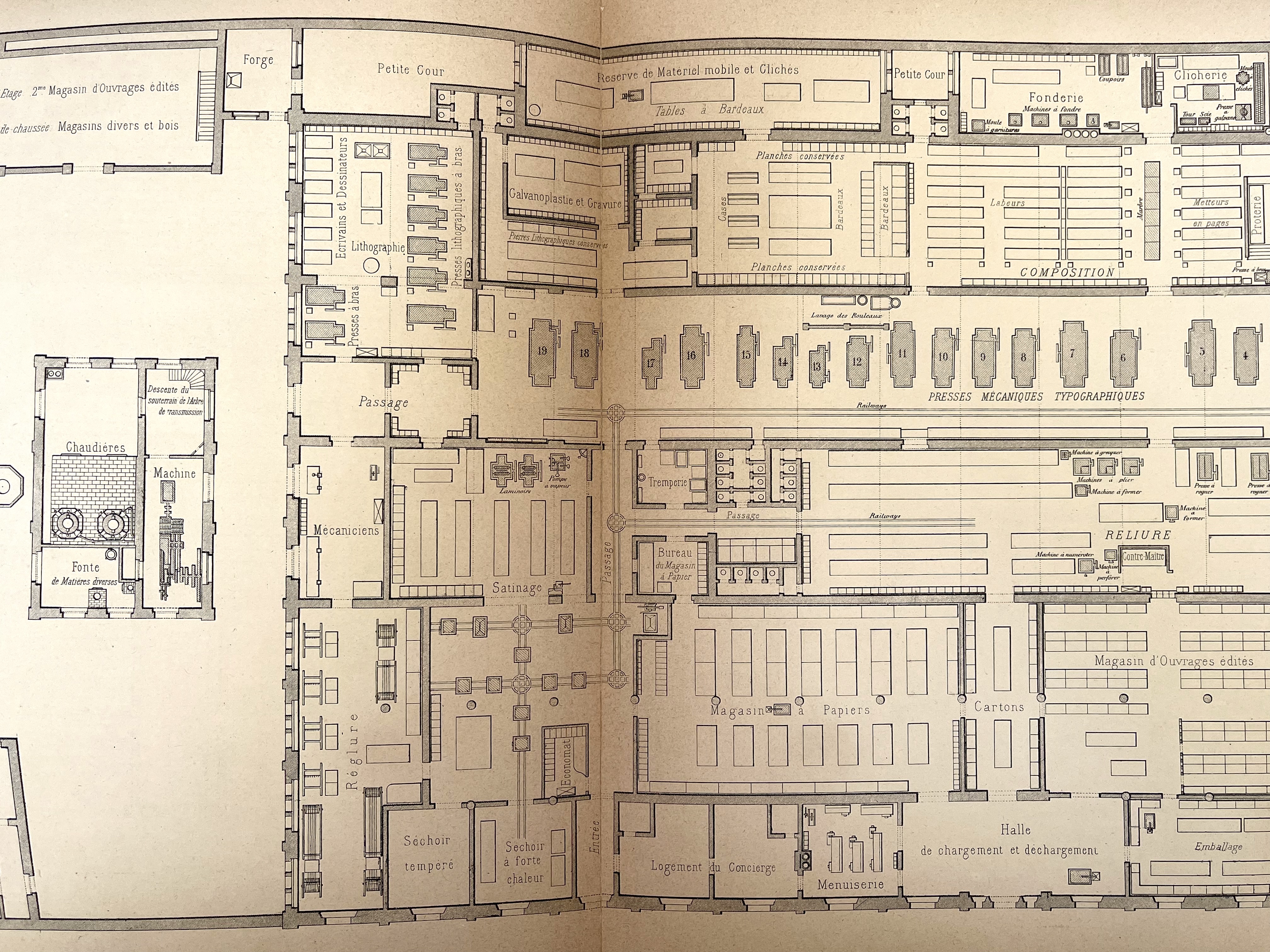

Jeremy Norman Collection of Images - Creative Commons
In this close-up view of the left half of the building layout we see the steam engine and furnaces in a separate building ouside the production facility. It appears that the steam engine was below ground so that the belt-drives from the engine drove the printing machines from connections in the basement. Further a bit to the right we see the lithography department in which the company employed artists and people who drew on stone. The presses in the lithography department were operated by hand. Below the lithography department we see the ruling department that produced things like account books. To the right of the lithography department is the galvanoplasty and engraving department--not a large department. To the right of the engraving department we see the very large composition department.
At the center of the building, in line with the steam engine are the 17 printing machines of various sizes, all driven by the steam engine.
Beneath that is the very large bookbindery with the placement of each of the few machines in that department identified.
Notice that the printing department and the bookbindery appear to have been connected by a "railway" presumably to facilitate transportation of heavy material between the two departments.
